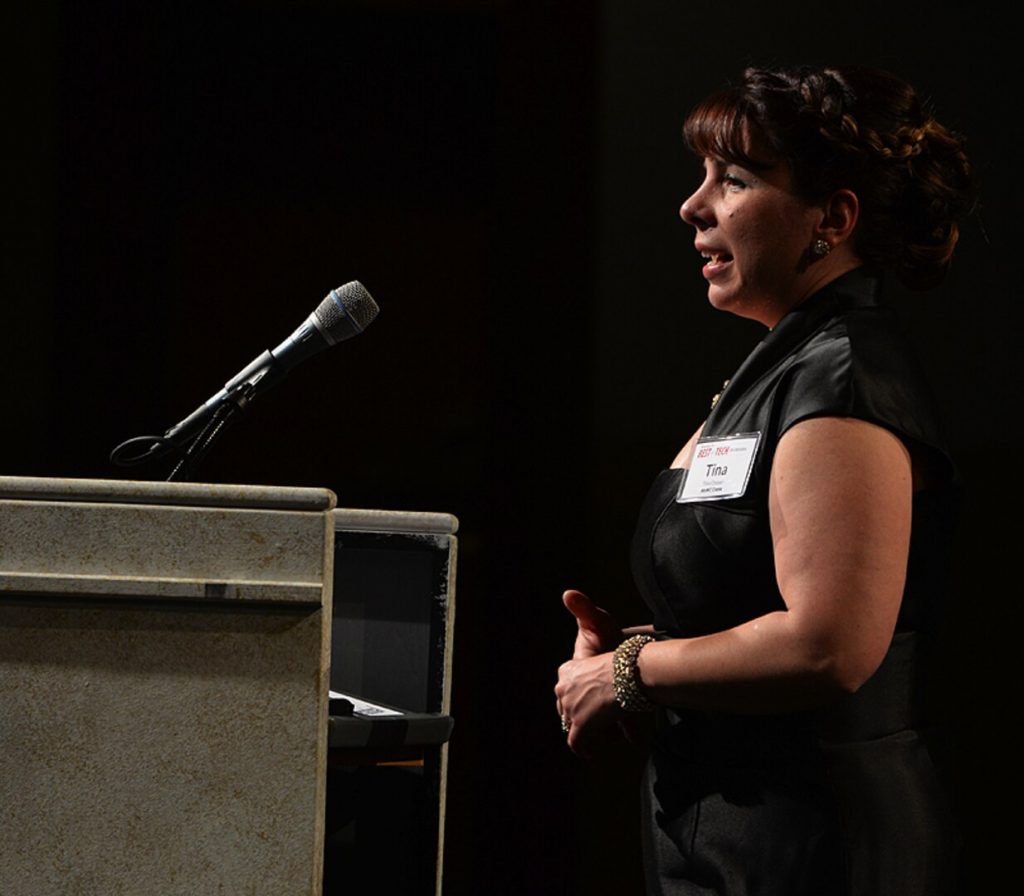
CRANE – Naval Surface Warfare Center, Crane Division, and Indiana University were awarded $1.7 million to collaborate on artificial intelligence programming for rural middle school students. The Office of the Secretary of Defense funded the AI pilot program, which will begin this summer.

NSWC Crane is teaming up with two IU schools: the School of Education and the Luddy School of Informatics, Computing and Engineering, both at IU Bloomington. NSWC Crane and IU received the National Defense Education Program Award to pilot the program, titled AI Goes Rural: Middle School Artificial Intelligence Education, to Indiana middle schools.
Tina Closser, the science, technology, engineering, and math program coordinator for NSWC Crane, said the program will focus on how AI is involved in students’ lives and the ethics surrounding AI.

“The expertise that IU is bringing to the AI Goes Rural program is exciting, and we are thrilled to have them as a partner to bring this curriculum to regional students,” Closser said. “People, including kids, think AI is alien and science fiction. They don’t realize how it is already integrated into their lives.
“AI is a hot topic right now, and it is more than Netflix and Spotify curating movies or music for the user. This pilot program is unique; I’ve never seen anything like this. There’s a lot out there about the technical side of AI and how it works, but we will be talking about what AI does and how it affects their lives.”
Jeff Zaleski, interim vice provost for research at IU Bloomington, said he is pleased that IU is continuing its strong partnership with NSWC Crane.

“The involvement of the faculty from two of our schools points to IU Bloomington’s deep strengths in areas related to artificial intelligence, and the application of this expertise to the lives of rural Hoosier students is especially exciting,” Zaleski said. “To pilot this program, many letters of support were received from across the Department of Defense, including the Joint Artificial Intelligence Center, U.S. Special Operations Command and U.S. Central Command. The letters make note of the critical importance of developing the AI talent pipeline.
Raj Acharya, associate vice president for research for AI innovation at IU, said the AI Goes Rural curriculum is designed to help students understand what AI can and cannot do.
“We will educate students on AI and machine-learning techniques by designing modules that students will experiment with under varying conditions,” Acharya said. “This will help them understand not only the potential of routine AI methodologies used, but also their limitations such as bias and ethical considerations.”
Closser said the curriculum and training are intended to be scalable across the nation, with broad applications.
“We wanted to create something that anyone around the country can implement, copy and paste,” she said.
A report from the Committee on STEM Education of the National Science and Technology Council said that investing in STEM education and outreach is critical for several reasons: The demand for STEM professionals will exceed the expected supply over the next decade; our nation’s students are “‘middle of the pack”‘ when evaluated against other countries; and participation and achievement of underrepresented groups such as women and minorities are lower than desired.
The STEM talent pipeline is part of the Department of Defense’s STEM Strategic Plan and includes promoting an “increased participation of underserved groups in STEM activities and education programs.” Closser said this and several other factors led to the development of this program.
“As our STEM team and IU were in the brainstorming process, we considered the rural, underserved area,” Closser said. “There’s a large percentage of students that attend Title I schools in the area, or schools that under the Department of Education have high numbers or high percentages of children from low-income families.
“We have talented people in the area, but the number seeking STEM degrees isn’t high. We have an opportunity through this program and programs like this to show kids what options they have and what they can do as a career.”
The AI Goes Rural team members include Closser and Alison Smith of NSWC Crane; Kyungbin Kwon, Anne Leftwich and Krista Glazewski of the IU School of Education; and Acharya and Mehmet Dalkilic of the Luddy School of Informatics, Computing and Engineering.
About IU Research
IU’s world-class researchers have driven innovation and creative initiatives that matter for 200 years. From curing testicular cancer to collaborating with NASA to search for life on Mars, IU has earned its reputation as a world-class research institution. Supported by $854 million last year from federal, foundation, and other external support, IU researchers are building collaborations and uncovering new solutions that improve lives in Indiana and around the globe.
About NSWC Crane
NSWC Crane is a naval laboratory and a field activity of Naval Sea Systems Command, with mission areas in expeditionary warfare, strategic missions, and electronic warfare. The warfare center is responsible for multidomain, multispectral, full-life-cycle support of technologies and systems enhancing capability to today’s warfighter.
Information News at IU Bloomington




